- Punch List Architecture Newsletter
- Posts
- Architecture and crime at the Louvre
Architecture and crime at the Louvre
We’re joined by Geoff Manaugh, author of “A Burglar’s Guide to the City”; plus, sorting through the rubble at Trump’s White House
Welcome to all of our new subscribers! Since many of you have arrived here following the latest news about President Trump’s ballroom project, which has seen Punch List featured in everything from Daily Kos and The.Ink to Buzzfeed and Seema Rao’s Art Lust, we’ll start there.
I don’t think the news coverage of Trump’s demolition of the East Wing—putting aside for now James McCrery’s plan for a bloated ballroom to replace it—has properly framed just how brazen and unnerving an act this was. The New York Times, for its part, continues to stumble by straining for balance in reporting on our unhinged chief executive; yesterday it offered a headline suggesting that while “critics are outraged” over the demolition, “others say it was time for a change.”
Simply put: If Trump can order the entire East Wing razed without review or consequence, it follows that he could also unilaterally decide, just because he felt like it, to demolish the entire White House. Or tear out, say, Maya Lin’s Vietnam Veterans Memorial on the grounds that it’s insufficiently patriotic (or just insufficiently gilded). And I’m sure the Times, in either case, would in the name of journalistic fairness dutifully go out and find one or two sources willing to defend the decision as sensible and overdue.
The point is not whether the East Wing, which in its most recent form had been built by FDR in the 1940s, had great architectural value on its own. The point is that we have a president who is behaving as though the White House from end to end is his personal property—and a press corps largely willing to treat that attitude as the sort of thing about which reasonable people might disagree. This is an exceedingly slippery slope.
I was back in Venice last week for a final batch of “Restaging Criticism” panels at Speakers’ Corner, the grandstand I contributed alongside Johnson Marklee and Florencia Rodriguez to this year’s Architecture Biennale. Our guests this time around included Elizabeth Diller, Inga Saffron, Alex Bozikovic, and Javier Agustín Rojas. Many thanks to them all! And many thanks to Todd Gannon, for writing this about Speakers’ Corner in his review of the Biennale for Log: “Cutting through the fray like a galleon, it exudes conviction in a dense milieu into which too many entries simply seem to dissolve.”
And now on to this week’s main event: a conversation with Geoff Manaugh on the Louvre break-in. If you’re anything like me, you’ve been consuming as much material on Sunday’s heist as you can get your hands on. (I should pause here, contra the paragraphs above, for some praise for the Times, whose reporting on the story, especially Catherine Porter’s work, has been superb.) I happened to visit the Louvre just four days before the crime, to see the fantastic Jacques-Louis David show on its opening day, and I have to admit I noted to myself how relaxed the security for that exhibition seemed. This isn’t the first big heist at the Louvre; not by a long shot. In the summer of 1911, an Italian man named Vincenzo Peruggia stole the Mona Lisa by hiding it under his cloak. The painting was recovered when Peruggia tried to sell it to a gallery in Florence.
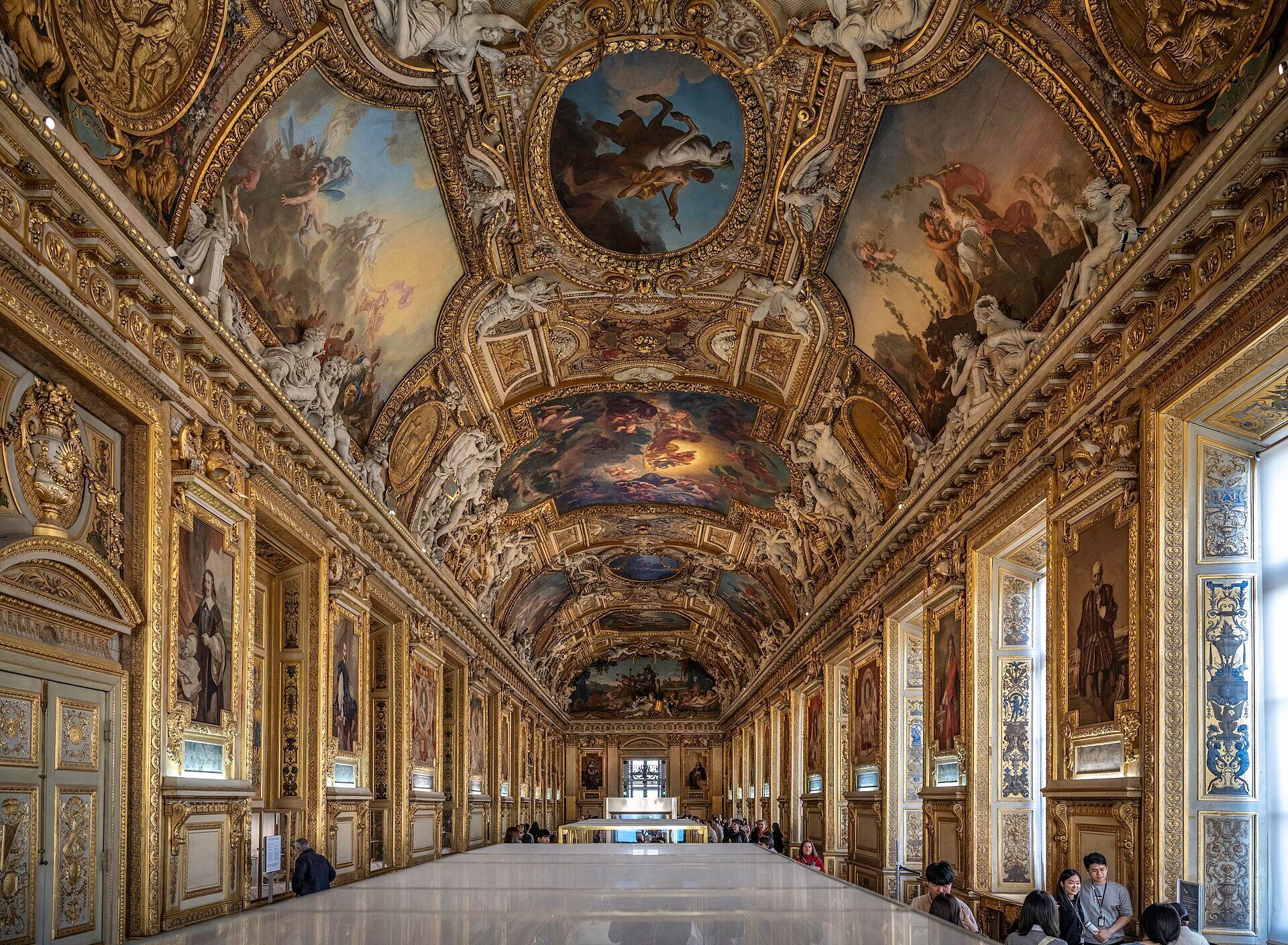
The Louvre’s Apollo Gallery, site of Sunday’s jewel heist. Photo by Wilfredo Rafael Rodriguez Hernandez, via Wikimedia
One angle that’s largely been missing from this voluminous coverage is a specifically architectural one, which is to say a thorough consideration of the relationship between the design of the Louvre wing where the heist took place and the crime itself. And we’ve got just the guest to fill that gap: Manaugh, a writer on architecture and other subjects who first made his name with bldgblog, which I wrote about for the L.A. Times way back in 2007.
Manaugh’s 2016 book “The Burglar’s Guide to the City” (FSG) covers everything from bank heists to panic rooms in arguing, as Annalee Newitz put it, “that burglary is built into the fabric of cities.” A special tenth-anniversary edition is due next year. Geoff was kind enough to interrupt his trip to Austria to exchange emails with me about the Louvre heist and what it suggests about architecture, social mores, and the museum’s own renovation plans.
Christopher Hawthorne: Hi Geoff! Welcome to Punch List. Thanks for joining me this week for a special dispatch on architecture and crime—specifically, of course, Sunday’s robbery at the Louvre. I’ve certainly seen enough police procedurals (shoutout to my wife, Rachel) to know where we should begin. Let’s say I’m one of the Paris detectives trying to crack this high-profile case. And you, as the author of “A Burglar’s Guide to the City,” are the expert—aloof, world-weary, a bit mysterious—we bring in to help us. What stands out to you about this particular heist, about how the thieves got into, and out of, the museum?
Geoff Manaugh: Thanks for having me. I’ll try my hardboiled best! A lack of familiarity with Parisian criminal networks might limit my investigative advice, but I’d say this was a funny heist. The target was obviously spectacular—nothing less than the French crown jewels—but the crew’s method of stealing them was not a technically compelling one.
A few things stand out, based on what I’ve read. First, the burglars used a motorized furniture-moving device to reach the right floor of the museum, implying at least base-level competence operating equipment of that kind. These tools are also ubiquitous, meaning that a couple guys trundling down the street in a furniture-moving cart would not, in and of itself, cause alarm. Ubiquity its own kind of camouflage.
This is something you routinely see in heists, in fact, where everyday equipment—for example, the same set of power tools you would use to renovate a kitchen or to repair a building foundation—gets repurposed for nefarious ends. Put another way, a sufficiently experienced private contractor has all the skills necessary to pull off a sophisticated heist.

An Instagram post by Böcker, the German company that makes the mechanized ladder used in the heist. Translation: “When things need to move quickly”
Second, the Paris crew knew exactly where to enter the museum from outside, implying at least minimal familiarity with the Louvre’s floor plan. However, this would be extraordinarily easy to deduce simply by walking around, even as a tourist, and just looking through the windows at the sidewalk below.
A potentially more telling clue is that, once inside, the perpetrators basically pulled off a smash-and-grab, breaking through the glass display cases with the same tools they used on the exterior windows. This suggests they knew exactly which cases to target, but also that those cases could be thwarted using simple construction tools.
For me, the main takeaway of crimes like these is that they show the extent to which we overestimate the inhibiting power of social mores. We seem to think, Who would do such a thing? We might believe a single deadbolt on an apartment door is enough to keep a burglar out, or that an expensive alarm on a glass case is enough to dissuade would-be criminals. But our approach to urban security is often premised on a belief that no one is brazen—or simply obnoxious—enough to take advantage of our trust. Unfortunately, this base-level social openness is something almost all burglars have no problem violating. Everything can be stolen if someone is willing to try.
It is really striking just how straightforward the plan was: What if we just… dressed up as construction crew and climbed up a ladder to the second-floor window nearest the Apollo Gallery, where the really valuable jewels are, and used two motorcycles to get away? And what if we did it in broad daylight, at the altogether reasonable hour of 9:30am on a Sunday, while the museum was open? Social media was full of jokes about how eminently French the timing was, giving the thieves time for a proper espresso, and maybe a cigarette, before they began. Even Böcker, the German company that makes the mechanized ladder apparently used in the heist, is taking advantage of its moment in the spotlight with a tongue-in-cheek Instagram post. (At the same time, all you have to do to understand the massive scale of the Louvre’s failure here is to imagine this crew carrying automatic weapons instead of power tools.) For all architects’ elaborate theorizing about how to organize circulation within a museum or other building, anybody trying to get into a secured building can often just create a new entrance—and exit—on the second floor by smashing right through a window. This was the case at the Louvre; it was also dramatically the case when the NYPD broke into the second floor of Hamilton Hall at Columbia to arrest protestors last May, after some of the occupying students secured the ground-floor entrance with a bike lock. Does this suggest that thieves are able to read architecture in a more direct way than the rest of us? That they see what’s hiding in plain sight?
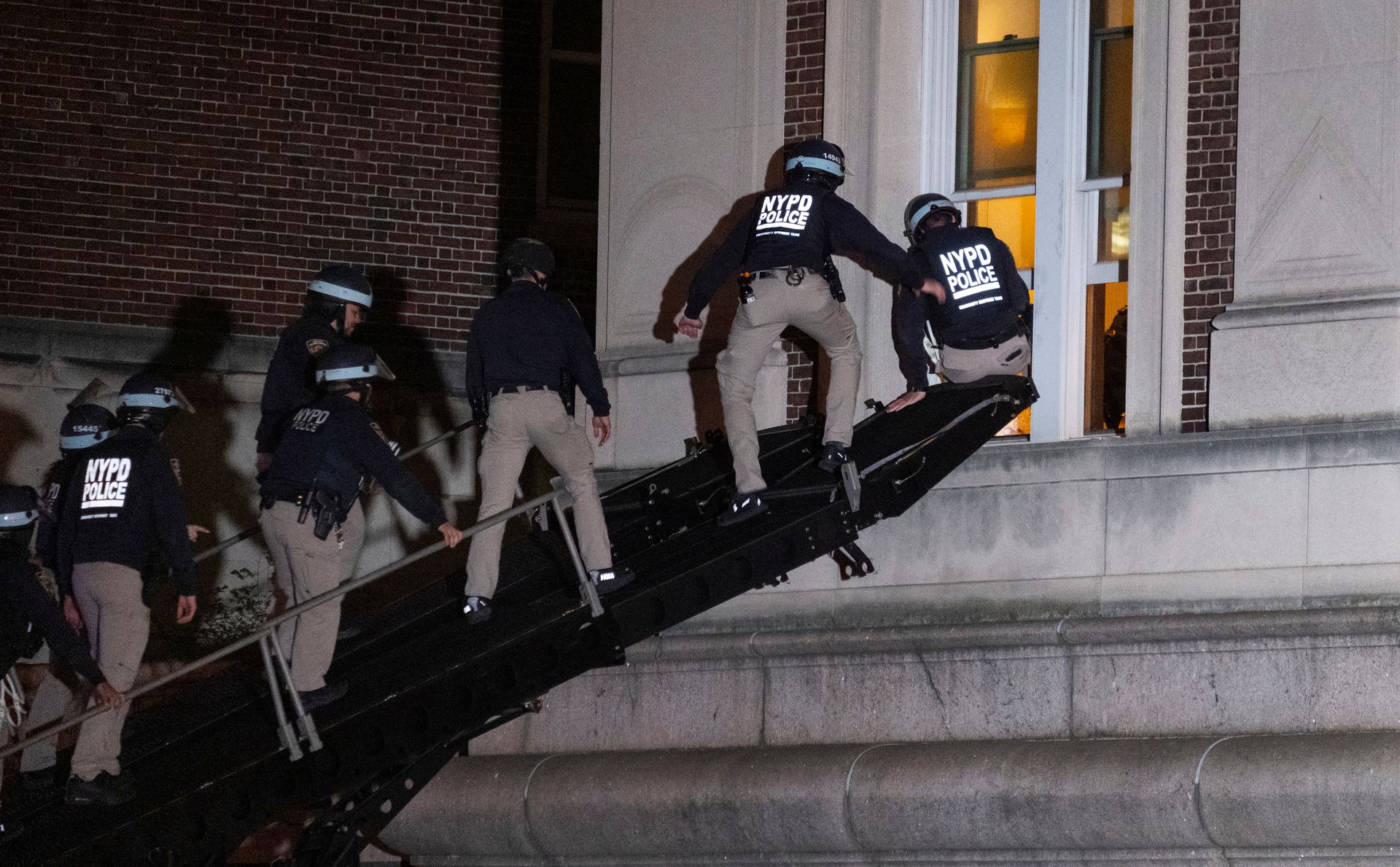
New York City police enter a second-story window of Hamilton Hall on the Columbia University campus on April 30, 2024, after the building was occupied by protesters. (Photo by Craig Ruttle/licensed via AP)
I do think the logic of the burglar is the logic of the short-circuit. It’s the realization that a door is often the most fortified part of a wall, for example, so you can side-step it entirely and just cut through the drywall. Most people enter and exit buildings as the architects intended, but that’s based almost entirely on etiquette or social expectations. Burglars have no shame about going in through a window or down through a roof or simply using an off-limits maintenance door—even, at the extreme, digging a tunnel in from a neighboring building. It’s a kind of operationalized Gordon Matta-Clark.
A lot of this comes down to tactical urgency: If you simply do not have time to use a building properly, then by necessity you have to find other, less polite means of reaching your destination. This is where burglars, cops, fire departments, and the military unexpectedly overlap, approaching the built environment as a series of obstacles to get through in the shortest time or most strategic way possible.
Of course, maybe you had a similar experience as a teenager, sneaking out at night to see friends—climbing out of your bedroom window onto a tree branch or using a back door, away from your parents’ bedroom, so that you can get around in secret. This is just the logic of the burglar. Minus theft!
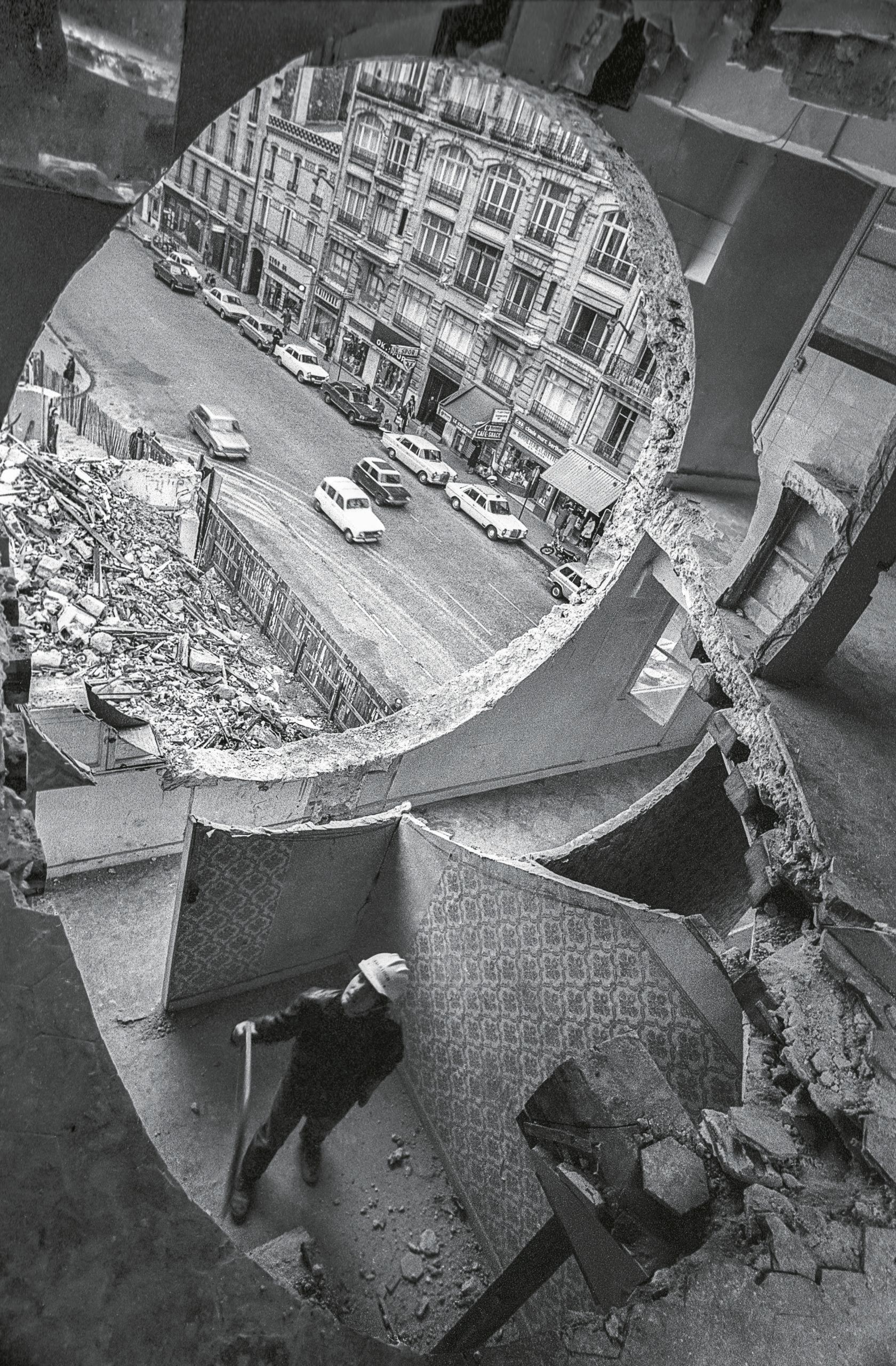
Gordon Matta-Clark’s “Conical Intersect,” the artist’s contribution to the 1975 Paris Biennial, involved cutting into two 17th-century buildings not far from the Louvre. Photo by Marc Petitjean
Just days before the break-in, the Louvre announced a shortlist of architects for an ambitious renovation plan. It will add new entrances along the eastern edge of the museum, with an eye toward easing congestion through the I.M. Pei glass pyramid in the center of the Louvre grounds, as well as a new, dedicated gallery for the Mona Lisa (which of course produces its own congestion). French President Emmanuel Macron said after the theft that the renovation project should include efforts to boost security, but another of its stated goals, as a recent news item put it, is “to reconnect the Louvre to its surrounding city.” In your view, what’s the best way to go about protecting a museum of the Louvre’s size? What’s the balance between preventing theft and safeguarding (and even extending) the sense of connectivity to Paris that gives the Louvre so much of its charm? Does anybody want to trudge through a windowless, locked-down museum that feels like a bank vault?
With the right materials, and the right collection, that could actually be pretty awesome. In fact, some might say that Marcel Breuer’s Whitney Museum is almost exactly a windowless vault, and many of the world’s most picturesque library interiors are, in effect, windowless bunkers for books. I might even go as far as to say that you don’t need a literal window where art is meant to be your window to the outside world.
In any case, material innovation in the security world means that a place like the Louvre can be fortified against heists and raids without turning it into a dystopian military base. Even basic things, like new synthetic glass products resistant to shattering—also often less reflective than ordinary glass, making them more visually conducive to art display—are one easy option. As I explore in my book, something as basic as landscape design, such as planting dense, tangled, or thorny vegetation, can boost security around exterior windows.
Viewsheds are also easy to mitigate. There was a heist several years ago at Rotterdam’s Kunsthal museum, designed by OMA, where it seems like the museums’ open design was its main vulnerability. Large, exterior-facing windows allowed a heist crew to look into the art galleries from outside, and thus study when crowds and guards were most likely to be present. They then just went in at the right moment and took the paintings.
To be totally clear, however, no security measures will ever completely prevent theft or burglary. A tactical military team, or a heist crew with a week or two to operate, will get through any obstacle you put in front of them. The purpose of security, in this sense, is less about space than about time: the goal is to delay, to make a heist too operationally taxing or physically difficult for anyone to realistically pull it off before someone else arrives or intervenes.
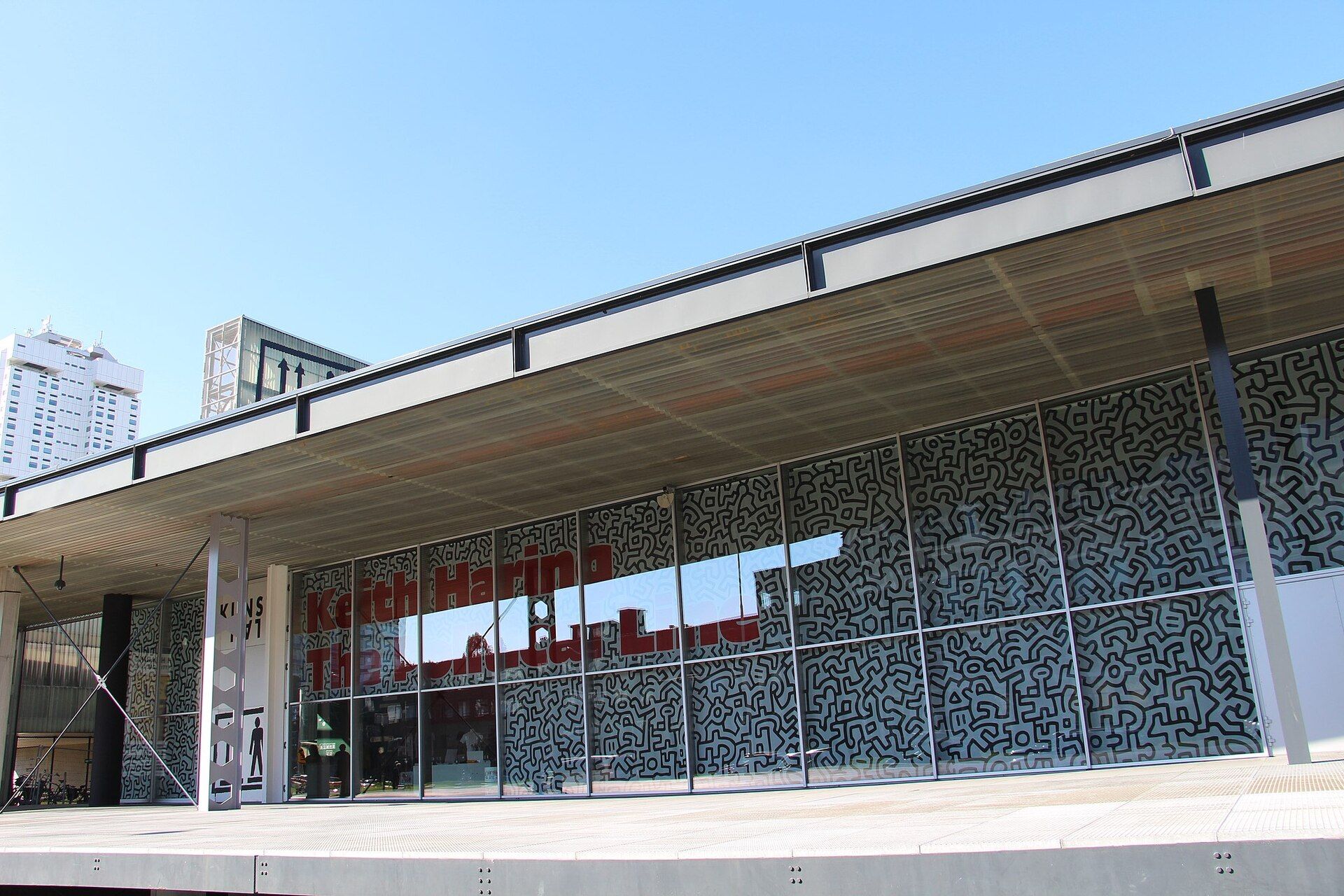
OMA’s Kunsthal in Rotterdam, completed in 1992. Photo by Fred Romero via Wikimedia
Finally, though, I think there’s a question beneath your question, which is about how architects approach security in the first place. Purely anecdotally, I’ve found that architects tend to shy away from questions of security, often out of a political belief that to pay attention to security, by definition, leads to a quasi-fascist world of fortresses and bunkers. Being safe, in this reading, is equated with being closed-off or misanthropic. Security is thus left up to the client or future resident, but this has an unintended and very ironic side-effect, which is that design questions then get kicked over to after-market firms who show up with window bars and security cameras and privacy fences, all of which are often aesthetically out of sync with the buildings they protect.
The reason I say this is ironic is that it is often architects’ lack of interest in security that leads to the production of a visibly fortified landscape—not the other way around. Architects know how to design functional, aesthetically pleasing spaces, and they are just as capable of designing safer spaces, at all scales, from buildings to entire neighborhoods.
I happen to like some natural light with my art viewing, and for my money Breuer’s trapezoidal windows at the Whitney are among the museum’s most compelling architectural features. (I’m also reminded of Alexandra Lange’s admirable crusade to correct people who say that Gordon Bunshaft’s Hirshhorn Museum, in D.C., is a “windowless” building.) But I take your point! And it’s striking that you mention OMA’s Kunsthal, because there’s another story about theft connected to that project. In 1996, a former OMA employee named Gareth Pearce sued Rem Koolhaas and the firm—as well as engineers at Ove Arup and the city of Rotterdam—claiming that they’d based the design of the museum on his thesis from the AA in London. (After a long legal fight, Pearce lost the case.) So the Kunsthal is a museum prone to theft that was alleged to have been the product of a stolen design. As it happens, Ana Miljački—who wrote about these allegations for Grey Room—will be giving a talk on the whole episode next week in New York.
It's funny—we’re discussing this while I’m in Hallstatt, Austria, a village that was surreptitiously copied and rebuilt in its entirety in southeast China, perhaps raising the stakes of architectural thievery. Apparently, Chinese architects secretly documented the town over several years and the mayor of Hallstatt only learned about their project after the unauthorized copy was nearly complete.
Back to the Louvre for a final question. How do you think the museum should treat the scene of this crime? It’s not hard to imagine the Apollo Gallery, in the wake of the theft, becoming a more popular destination for visitors than ever—even a sort of true-crime pilgrimage site. Should the museum retain some marks of the break-in, instead of, as seems likely, deciding to wipe away all traces of it? Should the physical record of the burglary become, in other words, something the Louvre itself frames for public viewing, as if adding the crime to its collection? This might take us back to your point about Matta-Clark. There are certainly buildings that make a point of preserving signs of violence or crime, but these tend to be prisons or internment camps rather than art museums.
I’m not a big fan of the Isabella Stewart Gardner Museum approach to art theft, which is to leave empty frames up on the walls to remind people of what was taken. That strategy takes one traumatic moment and inadvertently centers it as a new kind of theme-park identity for the rest of the institution. I think the Louvre would risk doing the same.
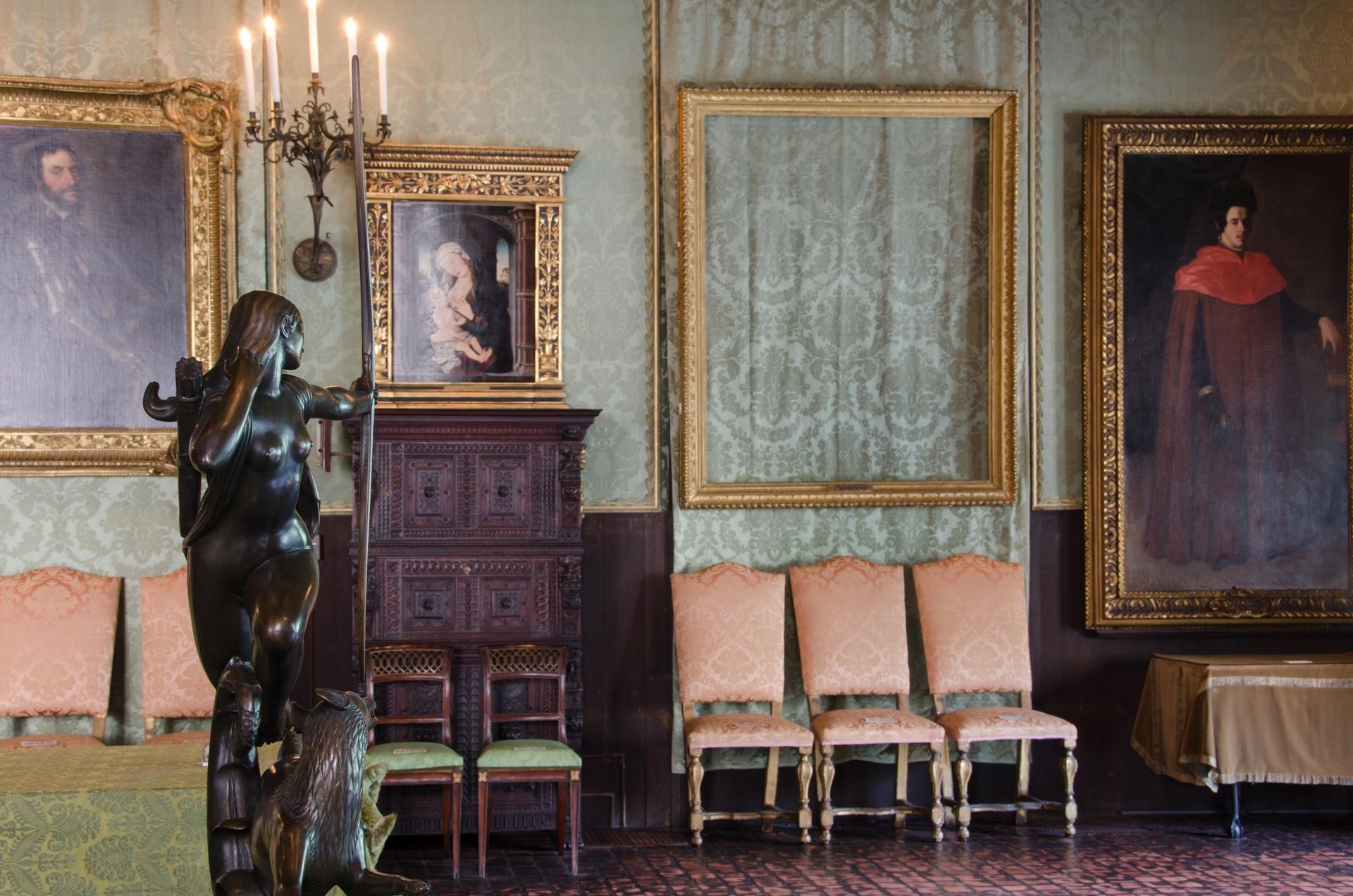
An empty frame at the Isabella Stewart Gardner Museum indicates where Rembrandt’s “Christ in the Storm on the Sea of Galilee” hung before it was stolen in 1990, in a notorious case that remains unsolved. Photo: Federal Bureau of Investigation via Wikimedia
We’re also still in very early days here—by the time this conversation is published, we might know a lot more about who did this and why. And, who knows, within a year, the museum might even have the pieces back. The heist should not be brushed under the rug, obviously, but it just adds to the lore of the place. This is a museum that has survived literal Nazi occupation, a museum whose galleries owe their richness and depth, again, to a literally Revolutionary looting of private collections all over France. A quick smash-and-grab doesn’t belong in that level of history.
I remember, nearly twenty years ago, the window through which John F. Kennedy was assassinated got auctioned on eBay, of all things, for $3 million. It had been removed from the book depository building and privately maintained for several decades. It was all very Matta-Clark and very Ballardian, but it suggests that maybe someday you’ll be able to bid on fragments of the Louvre heist—the window that was smashed, the discarded display cases, the mobile furniture cart—these archaeological fragments of a crime that briefly attracted the world’s attention.
Punch List is published weekly. Upgrade to a paid subscription here.
Email: [email protected]
Reply